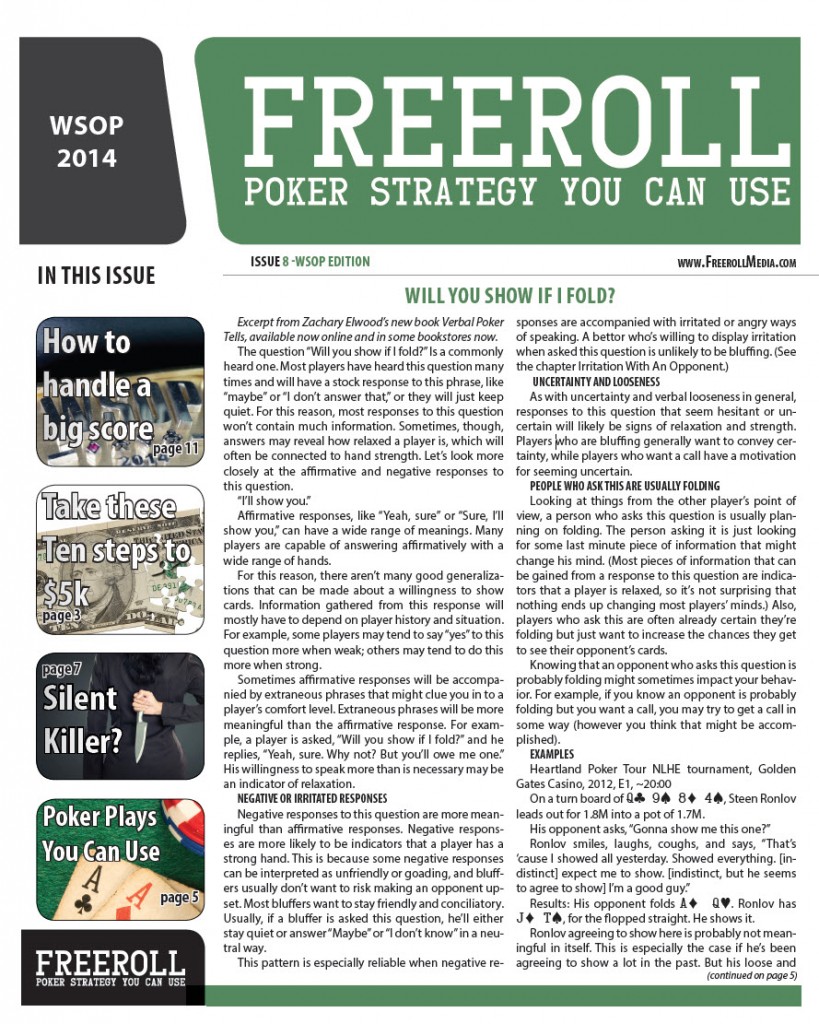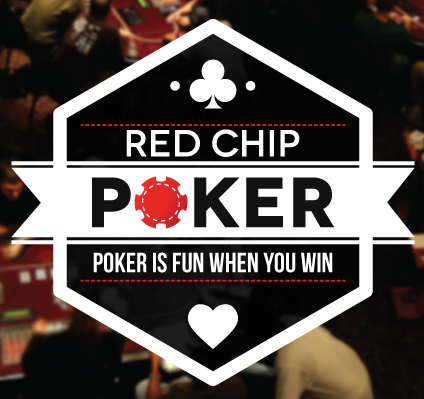Bluffing, Anxiety, and Stillness
- By Zach Elwood
- February 20, 2014
- Comments Off on Bluffing, Anxiety, and Stillness
 When animals are in danger, many have an instinct to “freeze”. It’s a physiological response to fear: the deer-in-the-headlights reaction that we’re all familiar with. And this is how many people react at the poker table when they’re anxious.
When animals are in danger, many have an instinct to “freeze”. It’s a physiological response to fear: the deer-in-the-headlights reaction that we’re all familiar with. And this is how many people react at the poker table when they’re anxious.
Someone being still or not being still is only valuable information if you have observed a person over time and found a correlation for each behavior. Some players are still and stoic all the time when in a hand, regardless of hand strength; the better, more-serious players are often this way. The value in this pattern is in studying people first and seeing if they exhibit the pattern.
For instance, you may notice that when a player makes a value-bet on the river, he has a lot of small movements in his body, his arms, or his hands. He may tap his fingers, he may look around the room, he may make quick glances at his opponent. These are all clues to his level of relaxation.
Then you observe this player when he is bluffing and he is very still compared to several previous situations. Maybe his arms and hands are completely still; maybe he’s not breathing; maybe he’s looking at one place on the table; maybe he’s not blinking. All of these might be small clues that something is different.
This information is not 100%. Many players are capable of moving around a lot with a good hand and then being completely still the next time they have a good hand. Sometimes, more experienced players will even fake nervous stillness with a strong hand, knowing that other experienced players might be looking for it.
But noticing out-of-the-usual stillness can be one factor when attempting to put together the puzzle pieces and answer the question: “Is this guy bluffing?”
Inducing this tell
The stillness tell can sometimes be induced when you’re contemplating a call. Your opponent may be engaged in some motion or gesture, but when you reach for your chips, the player’s actions suddenly slow or stop. For ex¬ample, your opponent may stop shuffling his chips, stop bouncing his leg, or pause his breathing for a couple of seconds. Or, he may be talking to his neighbor, trying to seem relaxed, but when you reach for chips, his face will get still and he’ll stop talking.
Basically, you want to try to be in tune with your opponent’s physicality. You want to try to feel how your opponent reacts to your actions. You want to sniff out the tension that the person wants to hide.
Noticing this behavior
The next time you play, watch players after they make significant bets. (This is even easier if you are not in the hand.) Are they still? Are they moving? What parts of their body are still? What parts are moving? When you get to see their hand, remember these things about them.
If trying to watch multiple players is too difficult, try just watching one or two players. I recommend picking the loosest players at the table; they will be involved in the most pots and you will have the most opportunity to study them.



